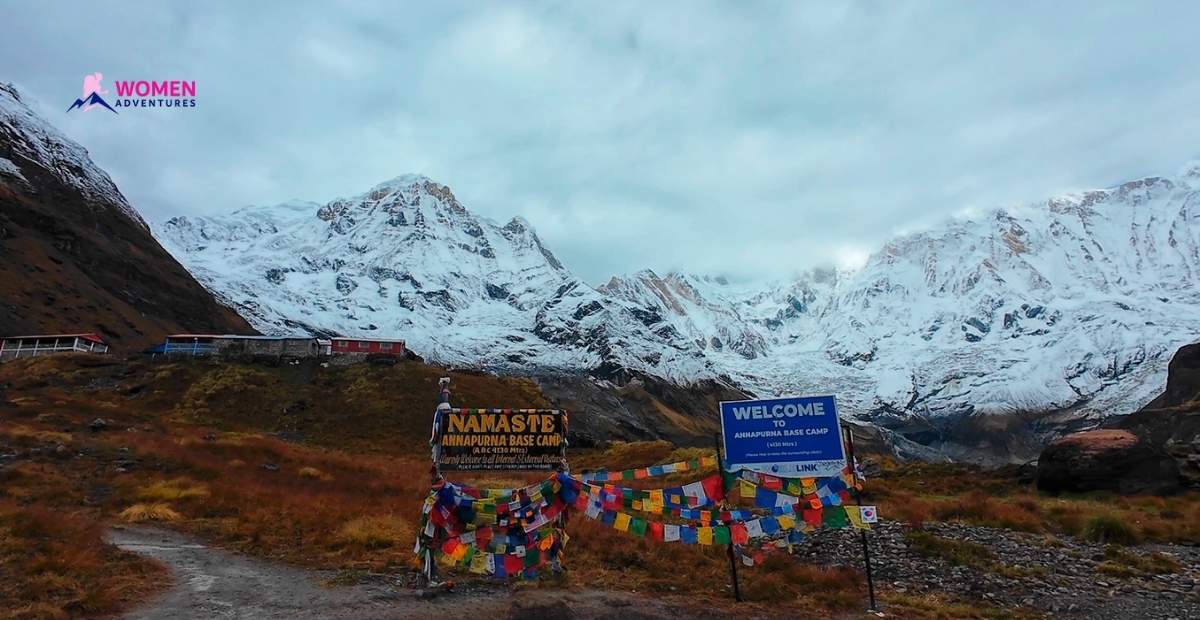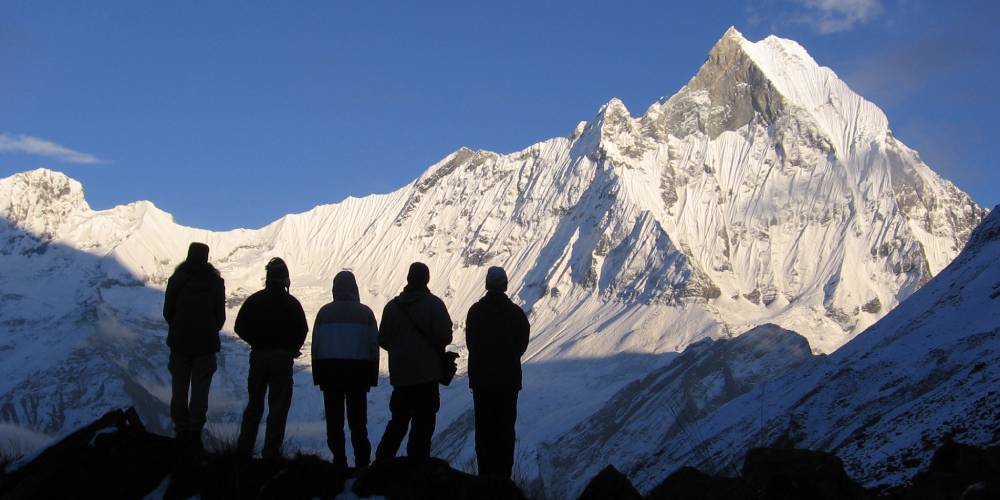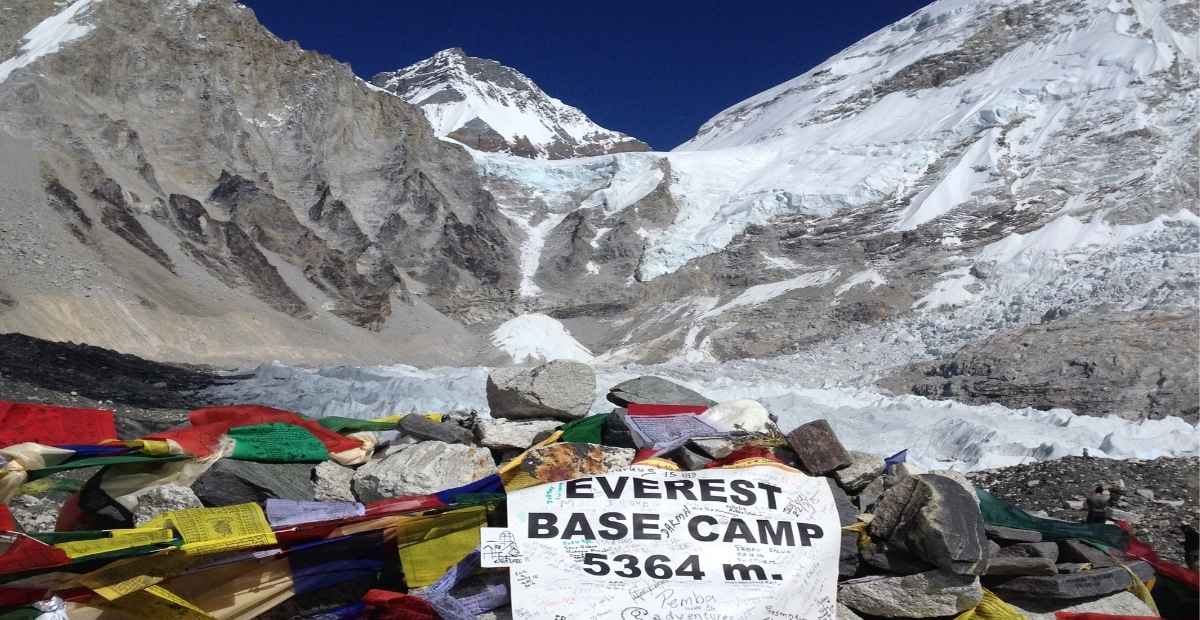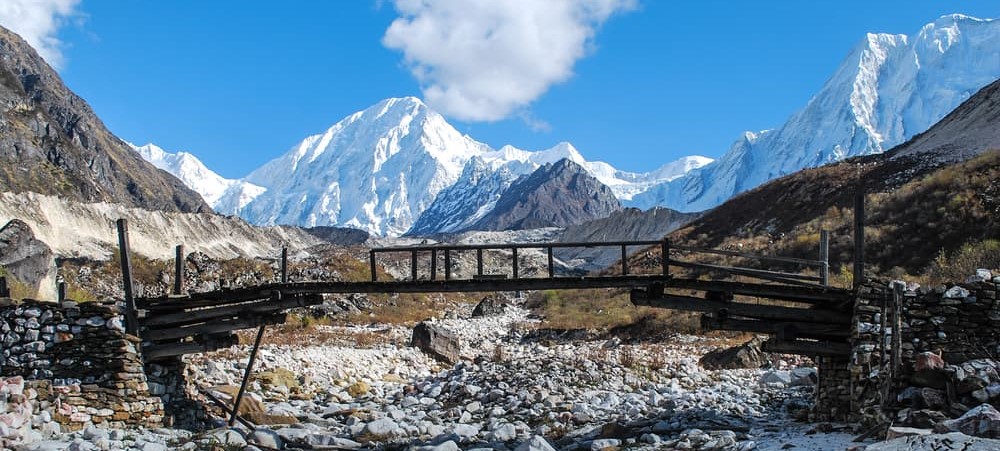Tabel Of Contents
- Why Timing is Crucial for Trekking to Annapurna Base Camp?
- Seasonal Breakdown for Female Trekking in Annapurna Base Camp
- How to Prepare for Trekking Annapurna Base Camp Based on the Season
- The Best Time to Trek Annapurna Base Camp for Female Adventurers
- Final Thoughts
- FAQs About Trekking Annapurna Base Camp
Annapurna Base Camp (ABC) is one of Nepal's most iconic trekking destinations, attracting adventurers from across the globe. For women who are trekkers, this one is a dream-come-true adventure in Nepal: An inspiring, hassle-free, and unforgettable journey in the essence of the majestic Himalayas. As one of the most accessible high-altitude treks in Nepal, the best time for Annapurna Base Camp trek plays a key role in determining the overall experience, ensuring a comfortable, safe, and rewarding adventure. This article will guide you to the ideal season, according to your preferences and objectives for trekking solo or with a backpacking group.
We are providers of trekking journeys with a distinct focus on women only travel, at Women Adventures. Women deserve a trail that is safe, comfortable, and empowering. Solo, or as a small group with our female-only experiences led by experienced guides and porters, you will have an adventure of a lifetime, feeling safe every step of the way.
When it comes to trekking to Annapurna Base Camp, timing is everything. You will be uncomfortable, put in danger and not have fun if you visit in the off-season. Knowing when to hit this trail is just as important as the weather and how crowded or solitary you want your time to be. This guide will answer your question of when is the best time for Annapurna Base Camp trek by discussing weather conditions and different crowd levels and personal preferences, while ensuring the experience is both safe and empowering for female trekkers.
Why Timing is Crucial for Trekking to Annapurna Base Camp?
It's very important to pick the right time to trek to Annapurna Base Camp for a number of reasons:
- Weather Conditions: The Annapurna region weather is very unpredictable and in the higher altitudes, temperatures drop significantly. The trek experience is also enhanced and shaped by seasonal changes. Sometimes there are seasons when the sky is always clear, it's warm, and an ideal time for trekking, whereas other seasons may bring lots of rain, snow, or extreme cold.
- Crowd Levels: Annapurna Base Camp gets crowded during the peak season, and unfortunately, that can take away from the experience. However, other off-peak times are on the quiet side, but sparse in services.
- Safety Considerations: Safety is the most important thing for female trekkers. Everyone knows that sometimes we have to be conscious about when it's right to go trekking alone, such as in bad weather or crowded trails.
- Personal Comfort: The period of your trek can directly affect how comfortable you will be. Choosing the proper season will make your stay much easier since the weather isn't as hard on you, the tracks are mostly in better conditions and you won't get lost in icy or stormy circumstances.
Thus, thinking carefully about the timing of your trek will make sure that it is not only fun, but also safe, comfortable, and rewarding.
Seasonal Breakdown for Female Trekking in Annapurna Base Camp
Let's explore each season in detail, offering a guide to help you decide the best time to go Annapurna Base Camp based on your preferences.
Spring (March–May)
The spring season is one of the best times to trek to Annapurna Base Camp, with clear skies and temperatures neither too hot or cold, not to mention fewer tourists on the trails, making it an ideal time of year for trekkers, especially women travellers looking for a comfy and pleasant trek.
Weather: Spring brings mild temperatures with daytime highs ranging from 10°C to 15°C at lower elevations. But at higher altitudes, especially above 3,000 meters, nights can still be cold.
Quick Insights:
- Maximum Elevation: 4,130 meters (13,550 feet) (Annapurna Base Camp)
- Trek Duration: 7-10 days
- Accommodation Type: Teahouses along the route
- Best Season for Female Trekking: Perfect for both solo and group trekkers, with favorable temperatures and good trail conditions.
- Trekking Restrictions: Generally, no major restrictions, but acclimatization is key to avoid altitude sickness at higher elevations.
Highlights:
- Clear Skies: Beautiful Panoramic views of the Annapurna range and other surrounding peaks with almost no clouds.
- Mild Temperatures: Temperatures are mild, which makes it easy to hike during the day and cool at night at higher altitudes.
- Blooming Rhododendrons: Spring brings blooming Rhododendrons along the trail, which make the view even better.
- Cultural Encounters: You will get a close-up look at the Nepalese culture of the Annapurna Region by passing through traditional villages like Ghorepani and Chhomrong.
Pros and Cons:
- Pros: The weather is great, the crowds are moderate, the spring flowers are beautiful, and it's perfect for both solo and group trekkers.
- Cons: Spring isn't as busy as fall, but there can still be a lot of traffic, especially at the start of the season.
Crowd Levels: Spring is the most popular time, so there will be some crowds, especially in the early season. But it's not as crowded as fall, and there is plenty of room for both solo and group trekkers.
Monsoon (June–August)
During the monsoon season, there is a lot of rain and the weather is hard to deal with. It's not the best time to trek to Annapurna Base Camp, but it does have some unique benefits for people who like to be on their own and have a different trekking experience.
Weather: Expect a lot of rain, which can make the trails muddy and slippery. Because of the clouds that are always there, it's hard to see at higher altitudes, and the trails can be hard to follow when they're wet and slippery.
Quick Insights:
- Maximum Elevation: 4,130 meters (13,550 feet) (Annapurna Base Camp)
- Trek Duration: 7-10 days
- Accommodation Type: Limited teahouses, with some closed during the monsoon due to fewer trekkers.
- Trekking Restrictions: Trekking is not allowed because of landslides, slippery trails and the chance of flooding. Be careful, especially if you're trekking alone.
Highlights:
- Lush Greenery: The monsoon rains make the landscape lush and vibrant green, which makes the scenery very rich and lush.
- Waterfalls: The trails have a lot of waterfalls, which are at their fullest during the monsoon, making for beautiful views.
- Solitude: The route to Annapurna Base Camp is less crowded, so you'll have peace.
Pros and Cons:
- Pros: Being alone, beautiful landscapes, and lots of waterfalls.
- Cons: The trails are wet and slippery, it's hard to see, and there is a chance of landslides. Some people may also find it uncomfortable to trek because of the weather.
Crowd Levels: Very few people there. This is the best time of year for trekkers who want quiet trails, but the risks and challenges of trekking during the monsoon season make it less ideal for many people, especially those who are trekking solo.
Autumn (September–November)
Autumn is considered as the best time for the Annapurna Base Camp trek, offering the perfect combination of clear skies, mild temperatures, and vibrant landscapes. It's the most popular trekking season, ideal for both solo and group trekkers.
Weather: After the monsoon, the skies clear, and temperatures range from 10°C to 15°C at lower altitudes. The dry weather ensures that the trails are safe and stable, making it easier to trek to high altitudes.
Quick Insights:
- Maximum Elevation: 4,130 meters (13,550 feet) (Annapurna Base Camp)
- Trek Duration: 7-10 days
- Accommodation Type: Fully operational teahouses.
- Best Season for Solo Trekkers: The dry weather and clear skies make it the best season for solo trekking. With fewer risks and vibrant landscapes, it's perfect for those trekking alone.
- Trekking Permits: Easy to obtain permits for trekking in the Annapurna region.
Highlights:
- Unmatched Views: Clear skies provide panoramic views of the Annapurna and Dhaulagiri ranges, making this the best season for photography.
- Ideal Trekking Conditions: Mild temperatures and dry trails ensure optimal trekking conditions.
- Festivals: Experience the cultural festivals of Nepal, like Dashain and Tihar, which add a special touch to the journey.
- Vibrant Landscapes: The landscape is lush and vibrant, particularly in the valleys, making the scenery even more breathtaking.
Pros and Cons:
- Pros: Perfect trekking conditions, stunning views, vibrant landscapes, and cultural experiences.
- Cons: The most crowded season, so that you may experience crowded teahouses and busy trails, particularly during the peak weeks.
Crowd Levels: High. Autumn is the peak trekking season in Nepal, so expect crowded trails, especially around major checkpoints and teahouses. However, the experience is worth the crowd due to the ideal conditions.
Winter (December–February)
Winter trekking offers a peaceful and isolated experience. The cold temperatures and snow-covered landscapes create a beautiful, serene atmosphere, but trekking during this time is for those who are prepared to face the challenges of the winter season.
Weather: Temperatures can drop significantly below freezing, especially at higher altitudes. Snowfall is common during the winter months, which can add a unique beauty to the trek but also presents some challenges.
Quick Insights:
- Maximum Elevation: 4,130 meters (Annapurna Base Camp)
- Trek Duration: 7-10 days
- Accommodation Type: Limited teahouses, with some closed due to harsh winter conditions.
- Trekking Permits: Permits are still required, but fewer trekking services are available during this season.
Highlights:
- Snow-Capped Peaks: The Annapurna range is blanketed in snow, creating a stunning winter wonderland.
- Peaceful Trails: Fewer trekkers on the trail make it a perfect time for those seeking solitude and quiet reflection.
- Breathtaking Sunrises: Winter mornings offer spectacular sunrise views over the snow-covered peaks, making it an unforgettable experience.
- Unique Photography: The winter landscapes offer incredible opportunities for photography, particularly the snow-capped mountains and frozen waterfalls.
Pros and Cons:
- Pros: Solitude, beautiful snowy landscapes, peaceful atmosphere.
- Cons: Cold temperatures, fewer teahouses open, more challenging trails due to snow and ice.
Crowd Levels: Very low. Winter is the quietest season, offering peace and solitude on the trails. However, you may encounter some difficulty with accommodation and colder temperatures.
How to Prepare for Trekking Annapurna Base Camp Based on the Season
Preparation is key to ensuring a successful and safe trekking to Annapurna Base Camp. Depending on the season, your gear and strategies will vary. Here are some detailed preparation tips based on the best time for Annapurna Base Camp trek, including what to pack, health considerations, and gender-specific advice for female trekkers.
Gear
Your trekking gear depends on the best season for ABC trekking. Here's what you'll need for each season:
- Spring & Autumn:
- Clothing: Light and breathable layers are ideal for trekking Annapurna Sanctuary in both spring and autumn. Pack moisture-wicking base layers, mid-layers like fleece or down jackets, and an outer waterproof layer to protect you from unexpected rain.
- Footwear: Sturdy, waterproof trekking boots are essential for trekking Annapurna Base Camp trek time. Ensure they are broken in before the trek to avoid blisters.
- Rain Gear: While spring and autumn are generally dry, it's always wise to pack a lightweight, packable rain jacket for occasional showers.
- Accessories: A hat for sun protection, a warm beanie or gloves for chilly mornings or evenings, and trekking poles to help with uneven trails.
- Monsoon:
- Clothing: You'll need breathable yet quick-drying clothing, as rain is frequent during the best time to go Annapurna Base Camp. Consider packing moisture-wicking layers, along with a good waterproof jacket and pants.
- Footwear: Waterproof trekking boots with good traction are crucial to avoid slipping on muddy and slippery trails during trekking Annapurna Sanctuary.
- Rain Gear: A high-quality, lightweight rain poncho or rain jacket is a must-have. It's best to carry a rain cover for your backpack as well.
- Other Essentials: Pack extra socks and plastic bags to keep things dry. A dry bag for electronics and other valuables is also advisable for the best time to go Annapurna Base Camp in the monsoon.
- Winter:
- Clothing: Insulated jackets, down-filled layers, and thermal underwear are essential for trekking Annapurna Base Camp best time. Pack warm gloves, a wool hat, and a scarf to protect your face from freezing temperatures.
- Footwear: Insulated, waterproof trekking boots are a must for winter conditions. Also, add gaiters to keep snow out of your boots.
- Accessories: Hand warmers, thermal socks, and a good-quality sleeping bag rated for sub-zero temperatures are crucial. A headlamp with extra batteries will be helpful for shorter daylight hours.
- Rain Gear: While winter isn't as rainy, the snow and cold will require waterproof and insulated outer layers.
Health Considerations
Maintaining good health throughout your trek is vital, especially for the best time to hike Annapurna Base Camp, which may expose you to altitude challenges. Here's what you need to keep in mind:
- Preventing Altitude Sickness: Altitude sickness can occur at elevations above 2,500 meters, so it's crucial to acclimatize properly.
- Trekking at a Slow Pace: Give your body time to adjust by trekking slowly, especially during the first few days of ABC trekking.
- Stay Hydrated: Drink plenty of water and avoid alcohol. You should aim to drink around 3-4 liters of water per day while trekking the Annapurna Sanctuary trek.
- Rest Days: Make sure to include rest days in your itinerary to allow for proper acclimatization.
- Symptoms to Watch For: Headaches, dizziness, and nausea are the first signs of altitude sickness. If you experience these, stop and rest until you feel better. If symptoms persist, descend to lower altitudes immediately.
- Maintaining Fitness: In preparation for the trek to ABC, ensure you are physically fit. Cardiovascular training, such as hiking, cycling, or running, will improve your endurance. Strengthen your legs with exercises like squats and lunges, and practice walking with a weighted backpack to simulate trekking conditions.
- Hydration Strategies: Always keep a water bottle accessible. Consider carrying water purification tablets or a filter bottle to refill from streams and water sources along the Annapurna Base Camp trek time.
Gender-Specific Tips for Female Trekkers
As a female trekker, some specific tips will make your Annapurna Base Camp trek time a more enjoyable and safe experience:
- Solo Trekking Safety: Solo female trekkers should take extra precautions. Trek with a reliable agency like Women Adventures for the assurance of a female-led team.
- Buddy System: If you're trekking solo, try to link up with another group or female trekkers for companionship and safety.
- Stay in Female-Friendly Accommodations: Choose teahouses and lodges that cater specifically to women for additional comfort and privacy.
- Personal Hygiene: Maintaining hygiene on a multi-day trek is important, especially in remote areas.
- Sanitary Products: Carry a good supply of sanitary pads or tampons, as well as wipes and hand sanitizers. Keep your products in a waterproof bag to keep them dry.
- Wet Wipes and Toilet Paper: Many places won't have modern toilet facilities, so wet wipes and toilet paper will be your best friends.
- Face Mask and Sunscreen: Protect your skin from the sun, dust, and wind. A good sunscreen (SPF 30 or higher) is essential, and face masks are great for preventing dust inhalation.
- Cultural Sensitivity: Respect local customs and traditions. In Nepal, modest dress is appreciated, especially in rural areas. Wear long pants and avoid revealing tops. This is especially important when passing through small villages along the trail.
- Safety with Valuables: Keep your valuables in a secure place. A money belt or hidden pouch for cash and important documents is a good idea. Carrying small amounts of cash for daily expenses is more practical than large sums.
The Best Time to Trek Annapurna Base Camp for Female Adventurers
The best time for Annapurna Base Camp trek varies depending on several factors, including weather, crowd levels, and personal preferences. Female trekkers, especially solo adventurers, need to consider when they'll feel most comfortable and secure on the trail. Here's a breakdown based on the factors that matter most to female trekkers:
- Weather:
- If you're looking for clear skies, mild temperatures, and manageable trail conditions, autumn (September-November) is undoubtedly the best time. The skies are at their clearest, temperatures are mild, and the trails are dry.
- Spring (March-May) is another great choice, offering moderate temperatures and fewer trekkers than autumn. The blooming rhododendrons along the way add a special charm to your trek.
- For those looking for fewer trekkers and more solitude, winter (December-February) offers a peaceful, snow-covered landscape, although the cold temperatures and more challenging trail conditions may not be ideal for everyone.
- Monsoon (June-August) is not recommended unless you seek solitude and don't mind the slippery, muddy trails and higher risk of landslides.
- Crowd Levels:
- Autumn is the busiest season due to the ideal trekking conditions, but this means teahouses and trails can get crowded. If you prefer a quieter experience, spring offers a good balance of weather and fewer trekkers.
- For those looking to avoid crowds entirely, winter is the best season, though with fewer facilities available along the trek.
- Personal Preferences for Female Trekkers:
- Solo trekkers, especially female trekkers, often prefer the autumn and spring seasons due to the well-established trekking routes, full teahouses, and overall safer conditions for traveling alone.
- Winter may offer solitude, but some female trekkers may find the extreme cold challenging, especially when it comes to safety and comfort.
Ultimately, the best time to trek to Annapurna Base Camp will depend on your preferences for weather, crowd levels, and trekking experience. However, for the majority of female adventurers, autumn and spring are the optimal seasons for a successful and safe trek to the base camp.
Final Thoughts
In conclusion, the Annapurna Base Camp trek is a must-do for female adventurers, offering stunning views, rich culture, and a challenge that's both rewarding and empowering. To ensure your trek is as safe and enjoyable as possible, it's essential to choose the best time to go to Annapurna Base Camp based on factors like weather, crowd levels, and personal preferences.
For solo female trekkers, the best time to trek ABC is during autumn (September-November) or spring (March-May), when the weather is favorable, and the trails are safe and manageable. If you prefer peace and solitude, winter can offer a quieter trek, but it comes with the added challenge of cold conditions.
At Women Adventures, we provide female-only treks led by expert female guides, offering the safety, comfort, and support that female trekkers deserve. Whether you're planning to trek in the peak season or during the quieter winter months, our tours cater to all preferences, ensuring a memorable and empowering journey.
Ready to book your Annapurna Base Camp trek? Don't wait for the perfect time—start planning now! Visit our website Women Adventures for more information on our female-friendly trekking packages, trusted guides, and all the resources you need to embark on this unforgettable adventure.
FAQs About Trekking Annapurna Base Camp
How Difficult Is Annapurna Base Camp Trek?
The Annapurna Base Camp trek is moderately difficult, suitable for trekkers with basic fitness. The maximum elevation is 4,130 meters, which can cause altitude sickness if not acclimatized properly. The trek involves 6-8 hours of walking per day, but it doesn't require technical climbing skills.
Is Annapurna Base Camp Crowded?
Annapurna Base Camp trek can get crowded during autumn and spring, which are the peak seasons. For solitude, consider trekking in winter or monsoon when there are fewer trekkers.
What Is the Best Season for Annapurna Base Camp?
The best time for Annapurna Base Camp trek is during autumn (September-November) for clear skies and mild temperatures. Spring (March-May) is also great, offering fewer crowds but similar conditions.
How Can Female Trekkers Stay Safe on the Annapurna Base Camp Trek?
Female trekkers should join a guided trek, stay in female-friendly accommodations, dress modestly, and keep valuables secure. It’s also important to inform someone of your itinerary and listen to your instincts.
What Gear Should Female Trekkers Bring for Annapurna Base Camp?
Female trekkers should bring layered clothing, sturdy waterproof boots, a sleeping bag, rain gear, trekking poles, and personal hygiene items like wipes and sanitary products for the Annapurna Base Camp trek.
Which Is Better, Annapurna Circuit or Annapurna Base Camp?
Annapurna Base Camp is shorter and easier, making it a great choice for beginners. The Annapurna Circuit is longer, with higher altitudes and more diverse landscapes, suitable for trekkers seeking a bigger challenge.
Can a Beginner Climb Annapurna?
Yes, a beginner can trek to Annapurna Base Camp with proper preparation and acclimatization. The trek is achievable for those in good fitness and doesn’t require technical climbing skills.




